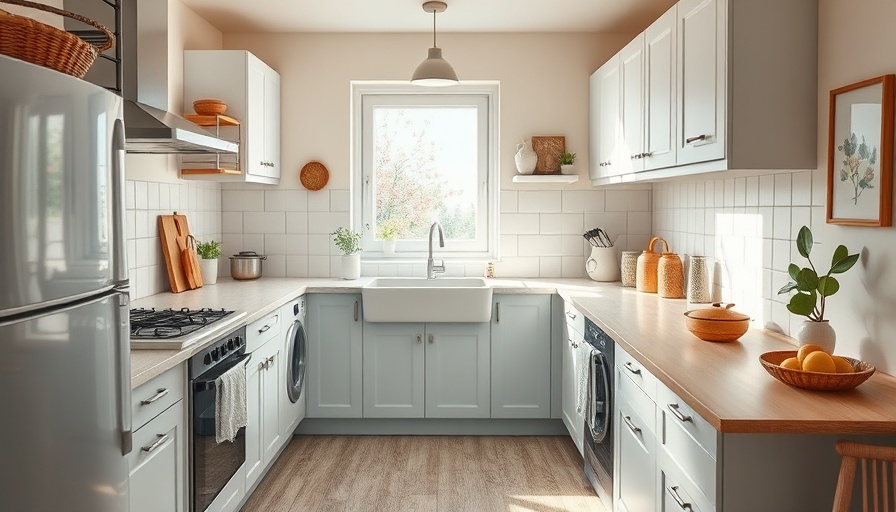
Transform Your Space: Mastering Small Room Design
Living in a small room doesn’t mean you have to sacrifice comfort or style. With a few strategic adjustments, you can create a larger, more appealing atmosphere. Homeowners aged 35-60, especially those looking to optimize their living spaces, will find that small rooms can be aesthetically pleasing and functional.
Declutter For Space
The first step to creating an illusion of space is to declutter. Taking away unnecessary items can significantly open up your room, making it feel larger. Designers advocate for a minimalistic approach, focusing on essential pieces that serve multiple purposes. For instance, a storage ottoman can provide both seating and hidden storage. Remember, less is more.
The Power of Color: Lighten Your Palette
Choosing the right paint color can also alter how spacious a room feels. Light colors reflect more light, creating an airy ambiance that tricks the eye into perceiving more volume. For a warmer touch, soft neutrals such as pale taupe or muted sage work wonders, as noted by interior designer Bree Steele.
Furniture Choices That Create Space
Consider incorporating leggy furniture that showcases more floor space, contributing to the illusion of a larger room. Furniture that sits off the ground allows light to flow beneath, making your space feel more expansive. Opt for pieces like clear acrylic chairs or glass tables, which lend an open feeling.
Maximize Natural Light
Natural light is a crucial ally in making small rooms feel larger. Using sheer window treatments instead of heavy drapes can help maximize light intake. Additionally, strategic placement of mirrors can reflect natural light, further brightening your space while adding depth.
Mirrors: The Game Changer
Mirrors are one of the oldest tricks in the design book for creating the illusion of space. By placing a large mirror opposite a window, you can double the amount of light and depth in a room. Designers often recommend incorporating smaller mirrored furniture pieces to maintain an airy feel.
Thoughtful Decorative Strategies
Using color-coordinated shelving can create a neat, organized appearance, minimizing visual clutter. Strategically arranging your décor with similar colors not only enhances aesthetics but also creates a sense of cohesion, allowing the room to feel more spacious.
The Importance of Vertical Space
When floor space is limited, look up! Utilizing vertical storage solutions helps draw the eye upward, making the room appear taller. Adding shelves that reach the ceiling and stacking items can give the impression of a more substantial space.
Embrace Open Space
The layout of furniture can significantly impact how spacious your room feels. Avoid blocking entryways and pathways to create a seamless flow. Open layouts give the user breathing room and alleviate feeling boxed in.
Looking Ahead: Future Trends in Small Room Design
As trends shift toward minimalism and sustainable living, understanding how to live efficiently in small spaces will become even more relevant. Optimizing small areas is not just about aesthetics—it can also contribute positively to your mental well-being. An organized, light, and thoughtfully designed space can foster productivity and relaxation.
By integrating these expert strategies into your design approach, your small room can transform from a cramped area into a spacious retreat. Whether you are a dedicated DIYer or new to home maintenance, these adjustments provide actionable insights for optimizing your living space.
 Add Row
Add Row  Add
Add 




 Add Row
Add Row  Add
Add 


Write A Comment